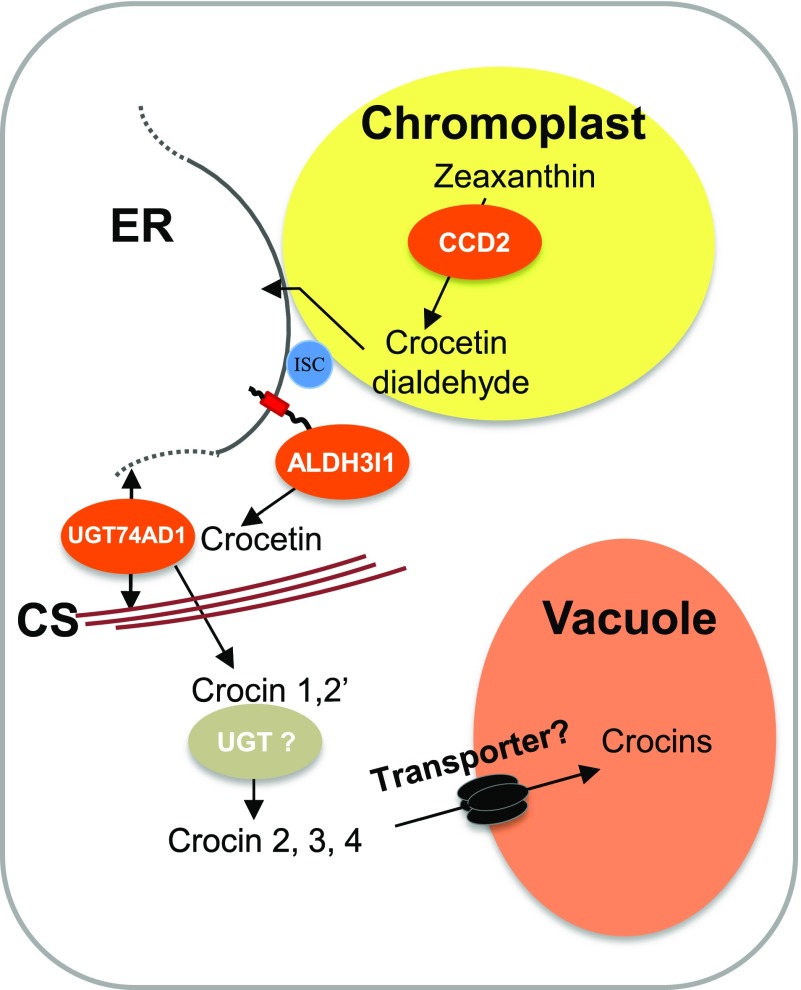Figure 9.
Proposed model for crocin biosynthesis/compartmentation in C. sativus stigmas. CsCCD2 cleaves zeaxanthin in the choromoplast, producing crocetin dialdehyde, which migrates to the ER, where it is converted to crocetin by CsALDH3I1. The ER and plastid membranes are contiguous through the action of an interphase stabilizing complex (ISC; Mehrshahi et al., 2013). Crocetin is converted to crocins 1 and 2′ by CsUGT74AD1, associated with cytoplasmic membranes or with the cytoskeleton (CS). A second, unidentified UGT converts crocins 1 and 2′ into crocins 2, 3, and 4, which are then transported into the vacuole through one or more unidentified tonoplast transporters.

